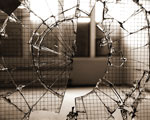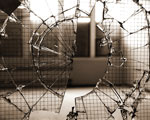
Spotlight: DVRs/NVRs
Protecting Progress
Florida school district implements frontline equipment to meet needs of students
- By Charlie Schacter
- Jul 01, 2009
 Over the past 20 years, the citrus groves of Sarasota, Fla., have been replaced by suburban developments. As a result, the Sarasota County School District has grown rapidly to meet the needs of working families with school-age children.
Over the past 20 years, the citrus groves of Sarasota, Fla., have been replaced by suburban developments. As a result, the Sarasota County School District has grown rapidly to meet the needs of working families with school-age children.
One of the key missions of the district is to provide a school environment that is safe, conducive to learning and free from unnecessary disruption. While crime issues on district campuses are limited to mostly vandalism, the district became acutely alert to the issues of student safety after the 1999 shootings at Columbine High School.
"The driving issue is student safety," said Darrell Reyka, manager of safety and security for Sarasota County schools. "If the school is vandalized, what do you do with your students the next day? If the cafeteria is vandalized, how do you feed the students?"
Providing security is a significant challenge for such a large school district. The high schools have an average of 2,300 students. Sarasota High School, the district's largest school, includes 15 buildings spread over 170 acres, making it more like a college campus. The middle schools range in size from 1,200 to 1,500 students, while the elementary schools have anywhere from 900 to 1,600 students.
The Solution
The district is addressing the multi-faceted challenges of security with state-of-the-art digital video technology from Dedicated Micros. Working with the manufacturers' representative firm Southeast Security Products of Pompano Beach, Fla., Reyka oversees implementation of the district's digital video surveillance strategy. The multi-phase project is a high priority and is supported by the school board and administration.
In 2006, the district standardized on Dedicated Micros' NetVu Connected platform by deploying Digital Sprite 2(DS2) 16-channel network video servers, for their high-capacity video storage, expandability, local monitor interface, network-based configuration and license-free remote viewing capability. To date, the district has deployed more than 2,000 cameras and 150 NetVu-connected appliances.
In addition to the school campuses, the district also outfitted the purchasing, central transportation and primary central office complexes with cameras and NetVuconnected appliances.
"Currently, we are adding more cameras and network video servers and using intelligent technology to address challenges in the security and safety of our schools," Reyka said. "As budgets get tighter, this new technology enables us to cover more ground with fewer people."
Remote Viewing
The school district mans the entire CCTV system 24/7 from the central office using Dedicated Micros' licensefree remote viewing software.
"We use Dedicated Micros' CX02-16 Cbus video switcher at some smaller locations," Reyka said. "Using the company's KBS3 keyboard and the keyboard extender, we can look at any cameras on any network video server, all from one monitor."
Every school administrator—namely the principal and assistant principals—has NetVu Observer on his or her own computer and can access every camera within the school. Administrators can view live and recorded video to work directly with parents and students.
At Sarasota High School, the Phase II implementation boosted the number of NetVu Connected appliances from five to 14, covering 154 cameras. The school security staff monitors the entire campus using two 40-inch monitors, with a Pelco PMVC4 Multiviewer and a single KBS-3A keyboard.
"This set-up allows school security staff to deploy security personnel in real time where they are needed," Reyka said.
Access Control Points
The technology also helps solve the problem of how to control access points to schools and other facilities. As part of the Phase II implementation at Suncoast Polytechnical High School, Reyka integrated digital video from the Dedicated Micros system at each access point with the IEI eMerge browser-based managed security platform. The Digital Sprite 2 provides a recorded video history at each access point.
Now students need a proximity card to gain entrance to the building. Each card is programmed depending on the student's schedule. All doors remain open until the first bell, and students who arrive late must come through the office to register. The elevators are controlled by cards, enabling staff and disabled or injured students to use them.
"We have the ability from the page on eMerge Browser to tag denied cards and then use the digital video from a DS2 to see who it was," Reyka said. "If a card is reported lost and it comes up as gaining entry, we can quickly see who used it. Or, sometimes kids give their cards to a friend. The DS2 video is absolutely critical for identity verification in the access control system."
Centralized, Simplified Management
The district manages authentication rights and firmware upgrades for the entire system over the network via a central management tool.
"We have multiple sites and large numbers of network video servers deployed, all of them password-protected," Reyka said. "With the centralized management tool, we can batch-group firmware upgrades to avoid individual upgrades.
"We also use the health monitor tool to proactively manage the system instead of waiting to discover a problem when we really need some video. The health monitor application polls the NetVu Connected appliances and sends an e-mail alert if it finds a problem with record rates, hard drives, cameras or anything else."
Solving Security Issues
Principals say the cameras have been a huge deterrent, and the security department has used the digital images to solve numerous crimes.
Once, three students spray-painted graffiti at one of the high schools. Security officials printed out their pictures, and the teens were caught at school the next day when one of them came to the office to resolve a scheduling confl ict and the secretary recognized him from the footage. The case was turned over to law enforcement, along with copies of the incident from the network video servers. The students were arrested and charged with a felony.
In another recent example, an elementary school student didn't come home on his regular bus. He boarded the wrong bus, and thanks to surveillance footage, school officials were able to quickly verify through video that he had gone home with a friend.
In other cases, the video has helped solve incidents of theft when students claimed innocence. A golf cart was once stolen and a group of parents claimed the innocence of the children who were suspected. The video proved otherwise.
This article originally appeared in the issue of .